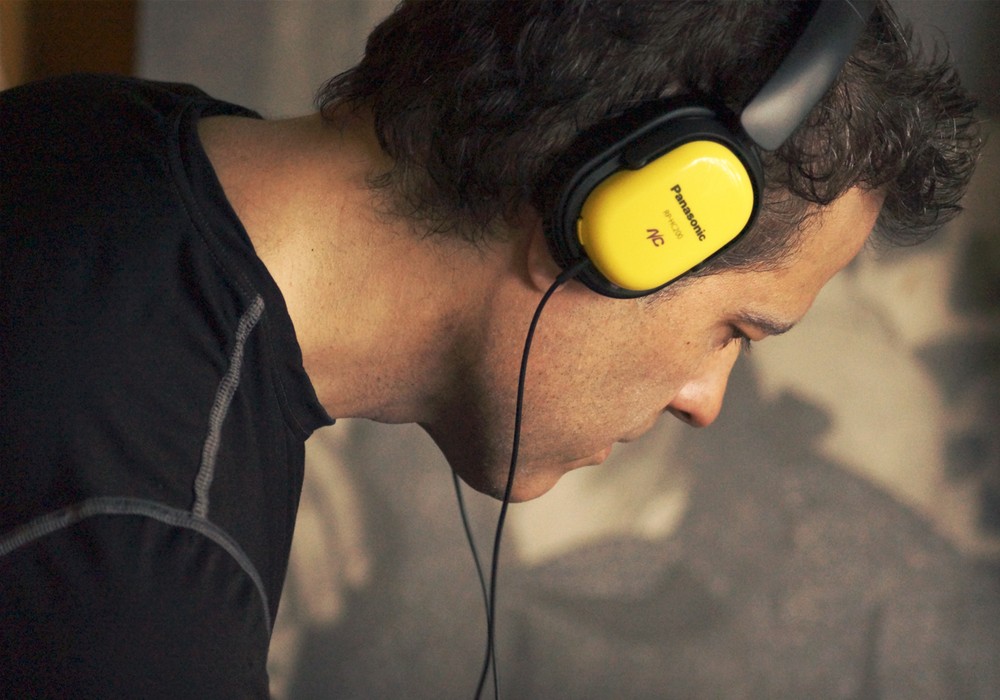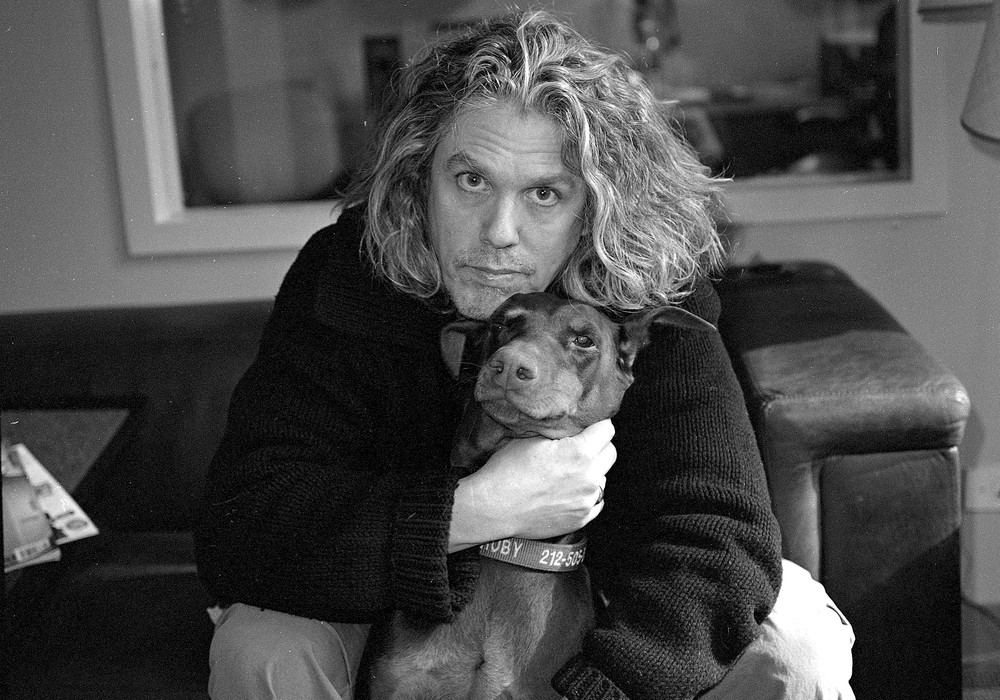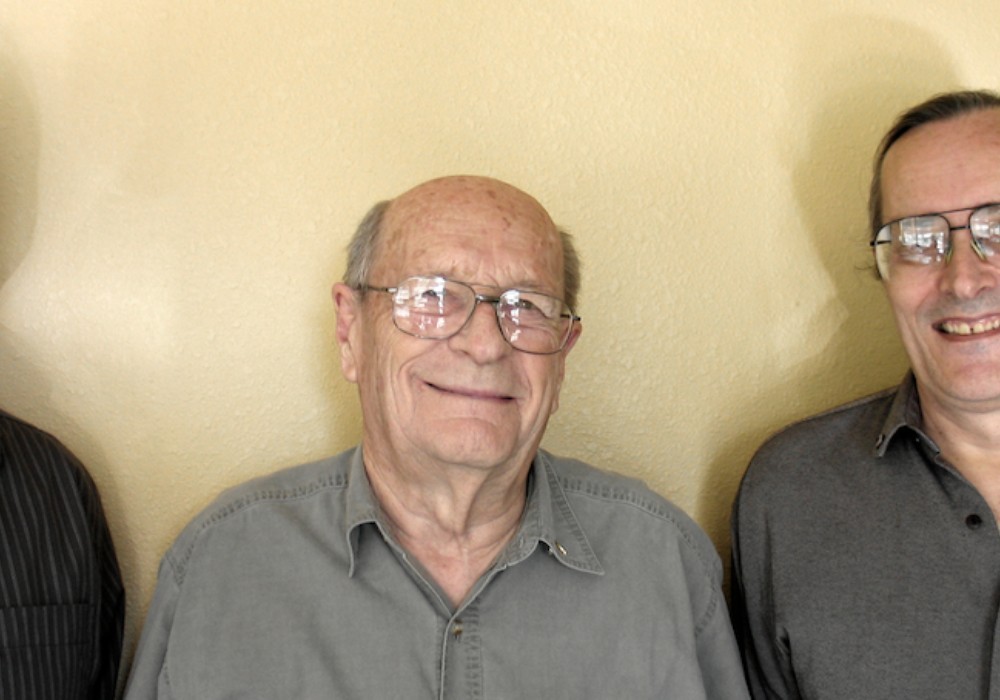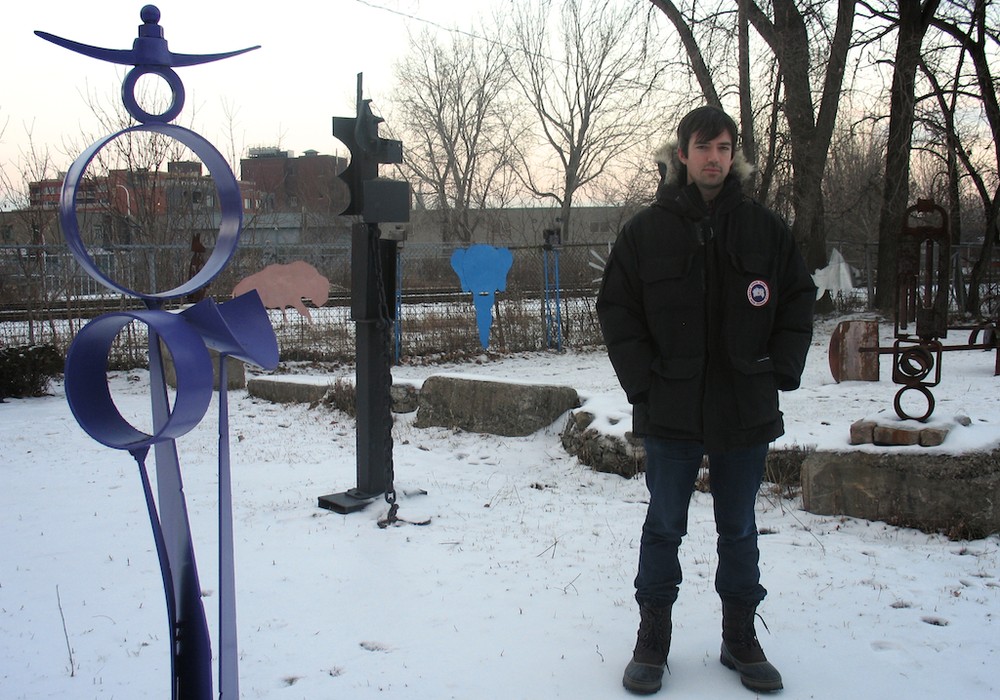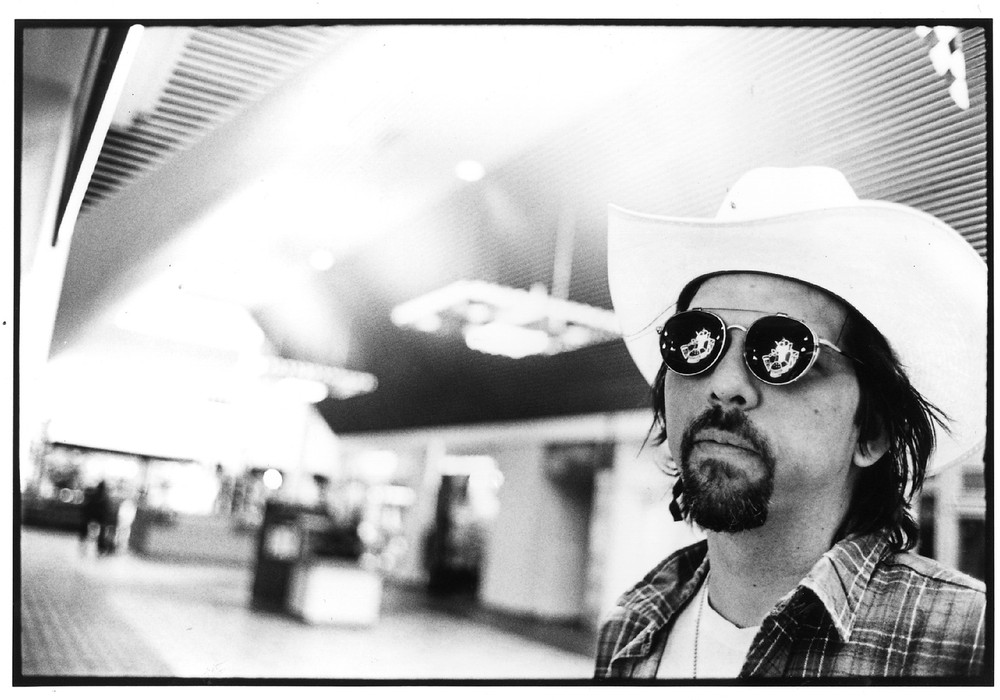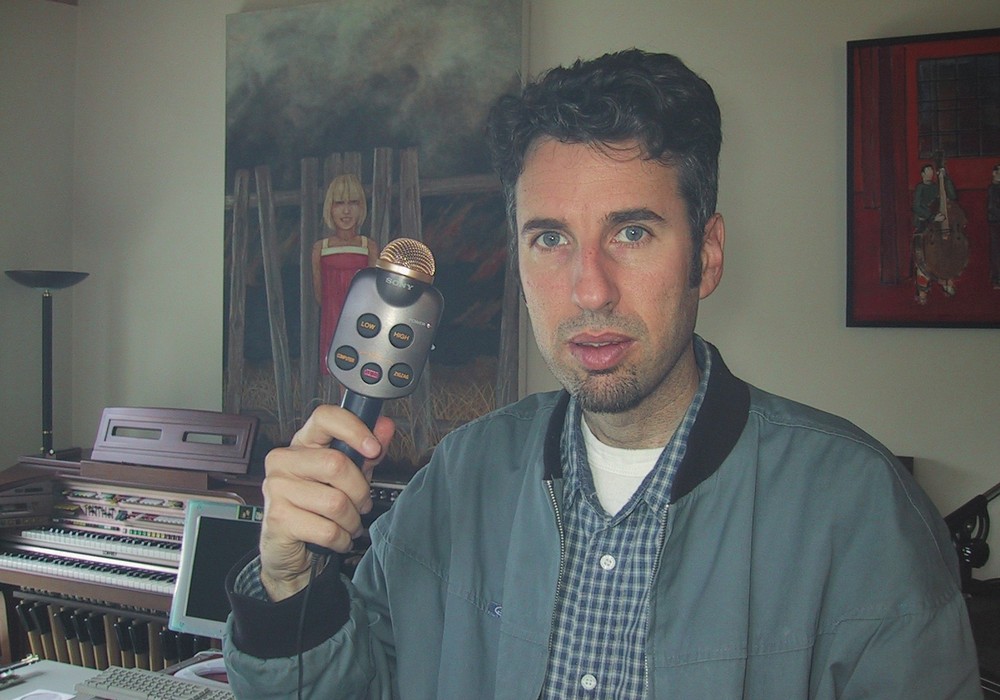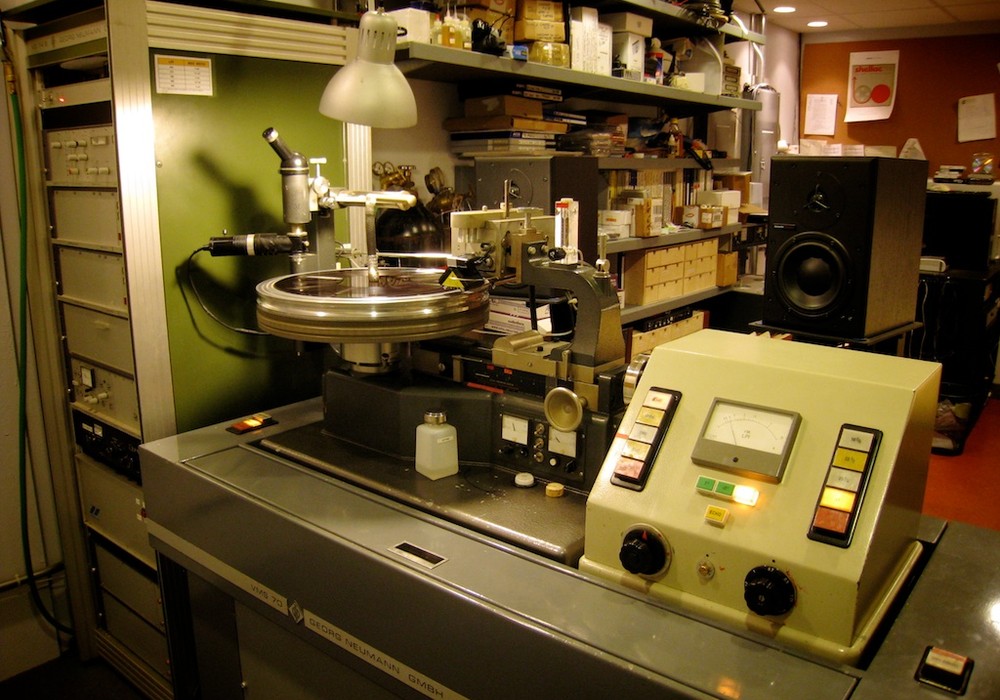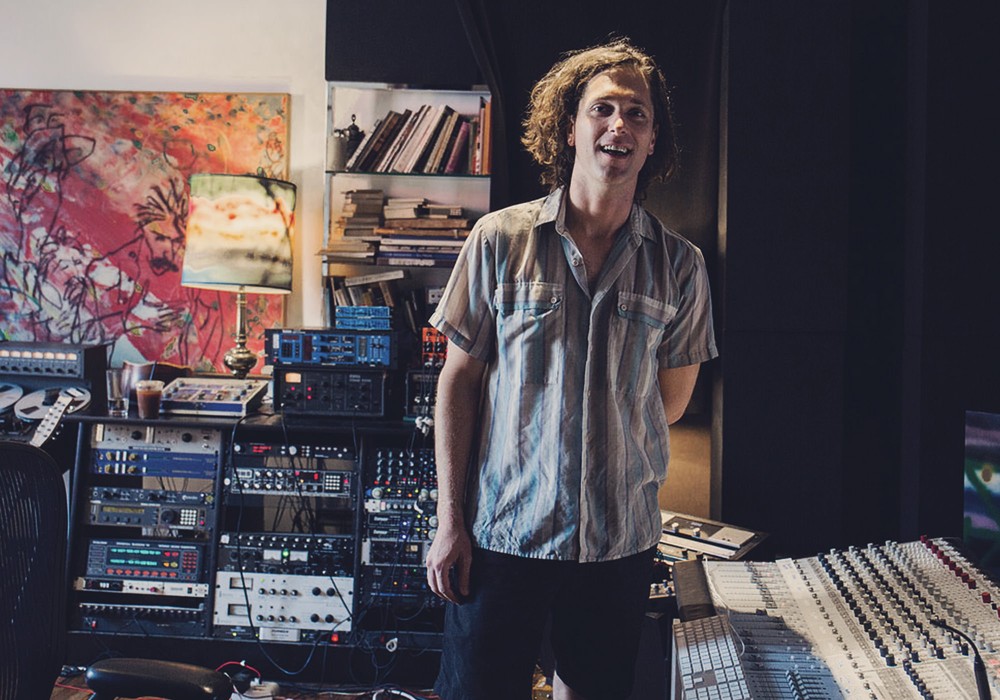In 1957, Polish immigrant brothers Leonard and Phil Chess converted a former automobile parts factory into the Chess Records Studio and Office at 2120 South Michigan Ave. in Chicago. After years at a makeshift rented studio, the purchase of the building enabled the brothers to record their own artists whenever they wanted. The main studio room at Chess, with its unique acoustical dynamics and absence of right angles, helped to define their sound, which would later become famous all over the world. Today, just down the street at 2255 S. Michigan, Truckstop records and studio is literally a stone's throw away from the former Chess site and is avidly keeping the flame of independent recording alive. Contrary to popular belief however, their studio was not built on the site of an old Stuckey's.
Truckstop is not your average drive-through recording studio. It's more of a collective, with musicians who come from all different disciplines and backgrounds playing on each others records and tours, or just getting together for a good old jam session and running tape to see what comes out. Such was the case when "The Boxhead Ensemble" came together for the first time. In 1995 Joe Ferguson, Michael Krassner and Braden King, an Atavistic Records employee and film maker, rented the South Michigan loft as a live/work space for their not-yet-formed band when Atavistic's head, Kurt Kellison got wind of it and "pulled a Chess." He suggested that Truckstop (as the loft space had now come to be known) house some of his recording equipment so that his label's groups could have a cheap alternative to the more costly recording studios around town. In return, King, Ferguson and Krassner would be able to use the equipment whenever they wanted to.
The first major project came about as Braden King was finishing up work on his 1997 documentary Dutch Harbor and needed a score. Michael Krassner threw together an impressive cast of characters including Ken Vandermark, Jim O'Rourke, David Grubbs, Rick Rizzo and Doug McCombs, and they all sat down for a five-hour jam session. Dutch Harbor premiered in Chicago to rave reviews and toured the country with different variations of The Boxhead Ensemble playing a live, mostly improvised score.
Truckstop, the label, also had its start in these early days. Started by Braden King and Joe Ferguson, Truckstop began by releasing three records in a row, Glyn Styler, Bobby Conn and The Goblins. A month into editing Dutch Harbor, Braden realized he wanted to concentrate on film making, so Kurt at Atavistic (Truckstop's parent label) took over releasing and promoting the three records. In the meantime, Joe had signed Pinetop Seven and eventually started running the label on his own. The first three bands did one more record each, Pinetop Seven has done four and the prolific Simon Joyner has released three (of his 10 total). Joe also signed Michael Krassner, who put out a solo record and two Lofty Pillars records. Other releases include Boston's T.W. Walsh, Scott Tuma, Matt Marque, TOE and Fred Longberg-Holm's Terminal 4. Many of Truckstop's records were recorded right outside Joe's office in the Truckstop studio by Mike or Joe, and feature crossover musicians from the Truckstop pool.
As I made my way up the four long flights of industrial-strength concrete stairs to Truckstop's perch, I could hear the sound of a distant, haunting guitar, organ and some percussion. Walking into the control room, I saw Mick Turner and Jim White of the Dirty Three mixing a piece of music for a Sydney play. Turns out those guys are just a couple of the many talented artists who regularly pull in their rig for a cup of hot coffee and slice of apple pie at Truckstop. Further investigation revealed projects in the works by, or involving Jeff Tweedy, Califone, Fred Lonberg-Holm, Simon Joyner, Pinetop Seven and many, many more musical innovators. I sat down with Joe Ferguson, Michael Krassner, and Dave Pavkovic, a fellow trucker and founding member of TOE.
Michael Krassner: This neighborhood used to be 'record row'. Chess records and BJ and Palace records. The Stones had that song '2120' about Chess records. They recorded there. So we're kind of like one of the last stands. There are a few studios in the neighborhood though, kind of hidden away.
Let's talk about some of the bands that have recorded here.
Joe Ferguson: A lot of what goes on here, but not specifically all that goes on here, is affiliated with the [Truckstop] label. Like the two TOE records, two Lofty Pillars records, which is Mike's band and a Mike Krassner record, the last three Simon Joyner records we recorded here. So a lot of it sort of integrates itself and the two work together. With that there seems to have built up a kind of community of musicians that appear on other people's recordings
Like a pool, a collective?
Joe: Yeah.
Mike: Mick and Jim [of Dirty Three fame] have done a lot of stuff here and...
Dave Pavkovic: Glen Kotche...
Joe: It's like 18 people.
Mike: Songs: Ohia, Manishevitz, Boxhead Ensemble. Joe and I also recorded a Dirty Three tour of the West Coast that we're going to mix here. Also some live things that we did like the Table of the Elements festival at the Empty Bottle with John Fahey, Gastr Del Sol and others. You saw the stage. We don't do a ton of shows, but once in a while there's a show here for free.
Like the Drag City New Year's Eve party?
Mike: Yeah, it was 1999, 'cause someone did that Prince song, "1999".
Have you had any trouble by the police?
Mike: No, that's why we don't charge any money. We've had the cops here. When the Nerves played, the cops were here like three times in one night. They were cool, there was probably some beer here that people had brought and some under age people so we just had to assure them that we weren't contributing to underage drinking. If there were minors here and we were charging, we could get in big trouble.
Can you think of any recording highlights?
Dave: The Dutch Harbor stuff, those have been really, really great sessions.
Mike: With The Boxhead Ensemble, one of the first things we did here was the soundtrack to the film Dutch Harbor which had a lot of pretty interesting musicians. We did it in one day and it was all improvised using a lot of different combinations. What was great about that is it seemed to have forged a lot of relationships. It was the first time a lot of people played together. That's where Dave met Doug McCombs and it was the beginnings of TOE, where they all decided they had a really good time and they made a record together. That was the first time Ken Vandermark played with Jim O'Rourke. Rick Rizzo recently was talking to me about that day and how ever since then so many things have come up because of that one session, and it led to so much stuff. At that point I think that Eleventh Dream Day wasn't playing that much and he was teaching and not playing a lot of music. That session got him connected with Jim O'Rourke and then Jim started using him in a lot of different stuff. That's definitely a highlight of Truckstop.
Was everyone just kind of playing together at once?
Mike: I had an idea, a total experiment and I was prepared for it to totally fail, but it seemed to work out really cool. It was, 'Lets just get a bunch of people, interesting musicians'" We had some film footage and we're trying to do some music to this film, and I was like, "Maybe we can just all watch some stuff and talk about it." It wasn't everybody all playing together at once. The idea was to get some different combinations of people playing and trying to create some different ideas. A lot of it was really gray and a lot of it didn't sound so great and didn't work, but a lot of it did work. That's kind of the beginning of the Boxhead Ensemble, where it kind of became the idea of getting different people. They aren't necessarily improvisers — some are indie rock and rollers doing this type of thing — and they seemed to have a fresh approach to it. It seemed pretty unpretentious and they had their own language that they knew, and I thought the music turned out pretty interesting. So, that all started out here and we've continued to do those sessions up until about a month ago. Jeff Tweedy was here playing with Fred Longberg-Holm and Jessica Billey just doing instrumental music, [for a new Boxhead Ensemble record] which he hasn't done a lot of. But he's a fantastic guitar player and he was really excited to do it.
Joe: We recorded a bunch of different sessions over the last 9 or 10 months of different line-ups. We probably have about 30 hours of stuff.
Mike: That's one of the great attributes of ADATs is that I'd never be able to afford to record this stuff analog. Unless we did it all live to 2-track.
So you obviously have no aversion to digital tape.
Joe: No.
Mike: A perfect example is when we did this stuff with Mick and Jim. They're kind of improvising for this soundtrack that they're doing [for the play in Sydney] and the idea was "we'll just run tape and we'll just play" and they ended up recording about 3 hours worth of stuff. They had a very low budget. So for stuff like that and all of the live recordings we've done, it's a lot more manageable then bringing an analog machine into a club. Especially when you're pulling a lot of shows in a row, it certainly has its advantages.
Or if a band is on a tight budget.
Mike: Yeah.
Joe: We definitely prefer working on the analog machine but when I'm not sitting there A/B-ing them, digital sounds good to me.
Dave: Because the studio's been so booked lately, I've been recording people outside my room, straight to my computer through those Swissonic converters. There's a huge difference between 24 bit with those converters and the ADATs — you can't compare it. The high-end is so much better. Also I got hooked up with some really great mics from Shure, the KSM44s. Those things going through those converters to my computer are really, really nice.
What software are you using to record?
Dave: I've been using Vegas a lot. I love it — it's so basic it does exactly what it's supposed to do, so easy to use. But if I know I'm recording something less than 7 minutes long and I know what the timings are going to be I'll do it on analog if I can. We have a 1' 16-track here and it's a great thing. I've also been recording on analog and then dumping it into my computer using the converters.
Does that make a big difference, other than going straight in to the computer?
Dave: It's just a different kind of sound, but they both sound good. Either one of those combinations, straight to the computer or through analog sound 10 times better than the ADATs. This studio's been particularly great for me in that regard. Having the option of using the live room vs. using digital in my room, also using this room out here [gesturing toward the large, open main room].
Mike: We've done a lot of recording just out here.
It seems like it would sound really good out here.
Mike: You have to compete with the traffic and stuff
Dave: I think that's a part of our sound. Truckstop is in the middle of the south loop in Chicago, there's trains and traffic.
Especially when that big diesel rolls by. A real 'Truckstop'.
Joe: We're not super soundproof, we do occasionally get some city sounds.
Mike: It's important to incorporate that into the character of the recording, that's just the way it is. Generally speaking, the people who like to record here have been of the mentality that they're not really quite interested in a total sterile environment of a hi-fi studio. They actually prefer to have the squeaky chairs and the train in the background.
I've been in some 'high-end' studios that felt cold and sterile, like a dentist's office. I imagine that would make some performers nervous.
Dave: This place is definitely not sterile or super-quiet, but it's really, really intimate. There's an immediacy and an intimacy that happens with the musicians that play here. The place where that is heard the most is on the Boxhead stuff. I walked in a couple weeks ago and Jeff Tweedy and Fred [Longberg-Holm] and Jessica [Billey] and Glenn Kotche and Mike and Joe were sittin' there and those guys had never played with Jeff before, this was a whole new ensemble and the communication was really immediate.
How did Jeff Tweedy get involved?
Dave: Glen Kotche, who plays in Lofty Pillars, with The Boxhead Ensemble and has been a good friend of ours, is the new drummer in Wilco. Jim O'Rourke, Glen Kotche and Jeff Tweedy also have a trio record coming out.
Tell me about the Dirty Three live recording project you're working on.
Joe: Last Fall, myself, Braden King, Michael Krassner and one other film maker from New York went along on a two-week tour of the Dirty Three and did a documentary film. I headed up the sound recording with Michael (and we would switch off with a portable camera) and Braden headed up the filming aspect of it. It was an amazing tour with a really great vibe. It was up in the Northwest and Canada so there was a lot of space and a good environment to spend some time in. The shows were completely moving. I was not sure how I would respond to that much expenditure of energy hearing the Dirty Three for 12 nights in a row, but I found it to never wane in its intensity and the effect it had on me. As I'm sure you know, their shows are quite an experience. You either really get into it, or you don't but there is not much room for being so-so with them. We traveled with one ADAT and a Mackie 1604. I would take feeds from the board and bus them through the Mackie to minimize track usage and then have either one or two pairs of room mics (Marshall 2003 and Shure SM81s). Midway through I started using a pair on stage and a pair in the back of the hall, cause the halls were so big that sometimes by the time the sound made it to the back, it would be some crazy wall of noise, so I found that the stage mics lent some clarity as well as space to the recordings. The release is going to be a CD as well as a DVD that is the documentary film. We still have to mix the music for the documentary, but the record itself is done. I just returned from doing a similar thing with The Boxhead Ensemble, who toured with a series of short films creating live soundtrack music. This time, we took two ADATs as well, as there were six musicians on the tour (Michael Krassner, Fred Lonberg-Holm, Jim White, Tim Rutilli, David Curry, Scott Tuma) who all played more than one thing a night. The music will become accompaniment to the films on DVD and more tours are planned for next Spring. I thought the ADATs worked much better for the lighter music of Boxhead Ensemble than it did for the loud rock of Dirty Three, I much prefer analog for them, but the recording still sounds great. It captures the raw power of Dirty Three as opposed to the lush, heavily reverby studio recordings, which I am also a fan of, but do not capture the live show for certain.
What other current projects are you working on?
Joe: Right now, I am working with Califone on a record based on a live show I recorded where they did a film soundtrack to the 1930's animation film The Misfit. We are also shaping the record from live improvisation session from the week prior and from the first half of the aforementioned live show. Also, gearing up to do the next Terminal 4 record.
Now came the time to get a peek under the hood and see what they use to get that mellow-warm Truckstop Records' sound. Joe took me on a little walking tour, where we met Woody the cat and saw rooms filled with many a cool piece of gear.
The main room of the studio is large enough for your average 18-wheeler with doublewide cab. Off this main area is the control room, soundproof live room, Dave's mastering/recording suite, office, and a couple other rooms with stuff in them which Joe affectionately calls "storage". On a walking tour of the facility, Joe pointed out some of the more distinct features, one being an old Zenith console hi-fi with built-in reverb, which they sometimes patch a signal to and mic.
The main console is a Soundcraft Series 600 24 channel with 8 buses. The main analog recorder is a Tascam MS16 1" 16-track. For those on a budget, Truckstop offers recording on one or both of their 2 ADATs, or Pro Tools and Wavelab for mastering. And the microphones? Audio Technica 4033 and ATM 25, Rode NT1, Marshall 2003XL, Shure KSM32, KSM44 and SM81, CAD, Oktava as well as assorted 57s and 58s. In the live room, Joe shared one last story about the patch bay that led to the control room.
Did you guys wire all these XLR and 1/4" connectors yourselves?
Joe: Yeah, Braden was pretty active with that, but we all worked a good deal on it. We hooked everything up wrong the first time and had to go back in and resolder it. We ran all the snakes through and hooked it up and then when we soldered it on the other side we put all the connectors on backwards. We were getting ready 'cause The Vandermark 5 was going to come in and do a 2-hour session, one song, so we were up all night resoldering the whole thing. That was our first session and we were so out of our minds. It was the last stretch to finish it and we just started booking without having anything ready.
www.truckstoprecords.com
Interviews | No. 116
Ian Brennan: Searching for the Truthful and Genuine
by Larry Crane
Described as "a manual for those on a quest for authenticity, in an age of airbrushed and Auto-Tuned so-called 'artists'," Ian Brennan's book, How Music Dies (or Lives): Field Recording and the Battle...


